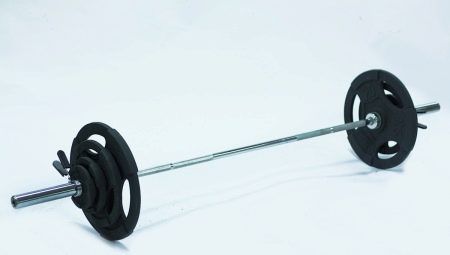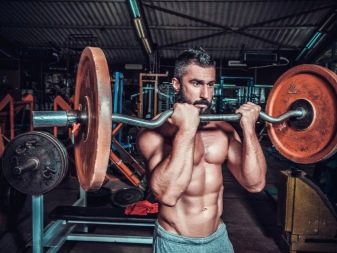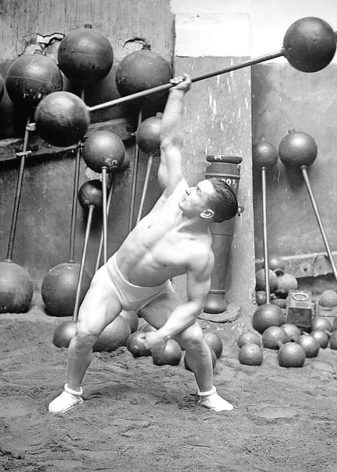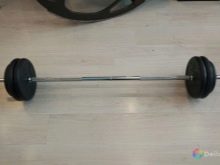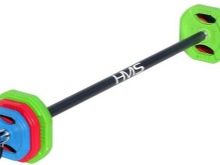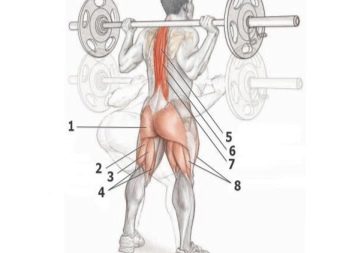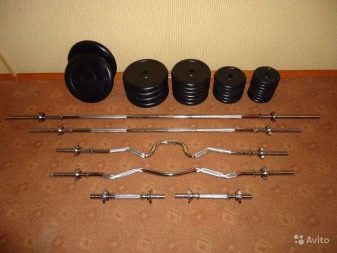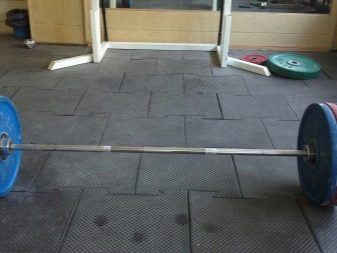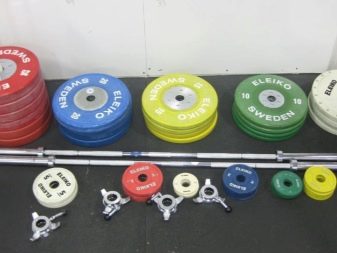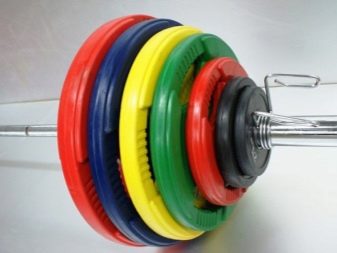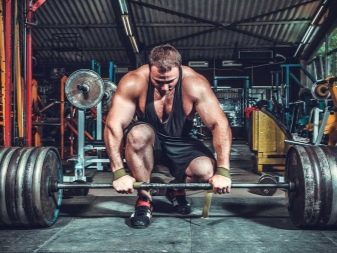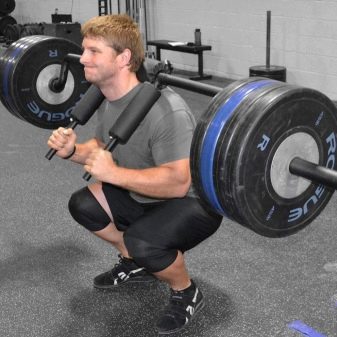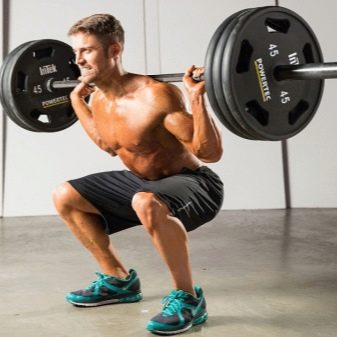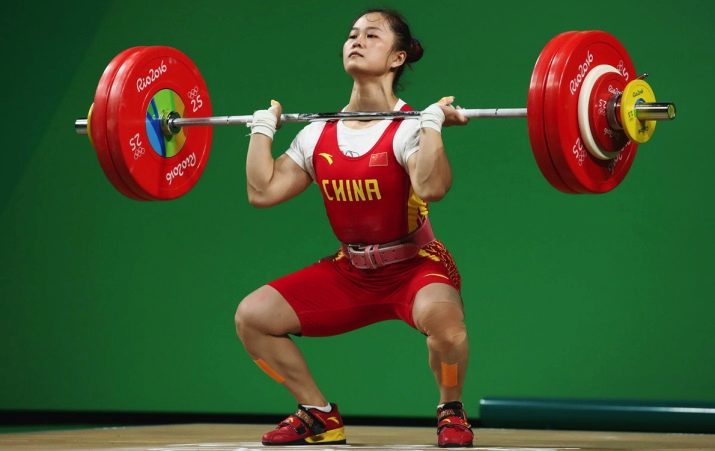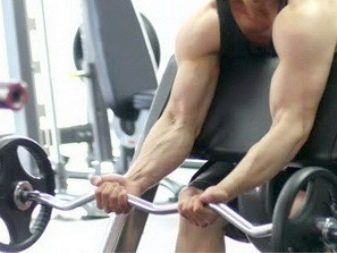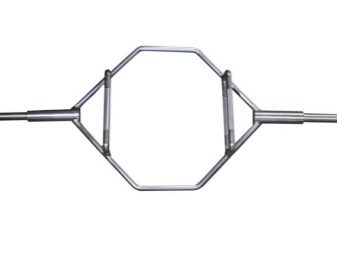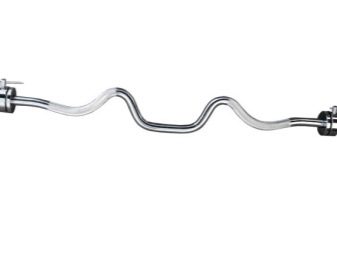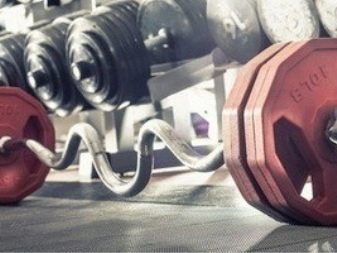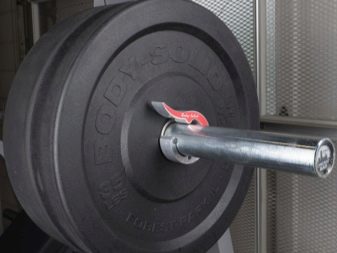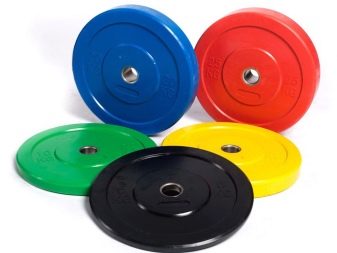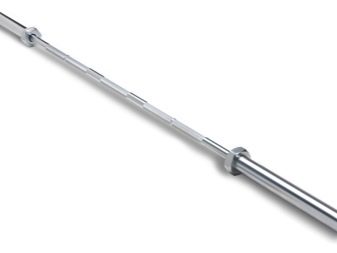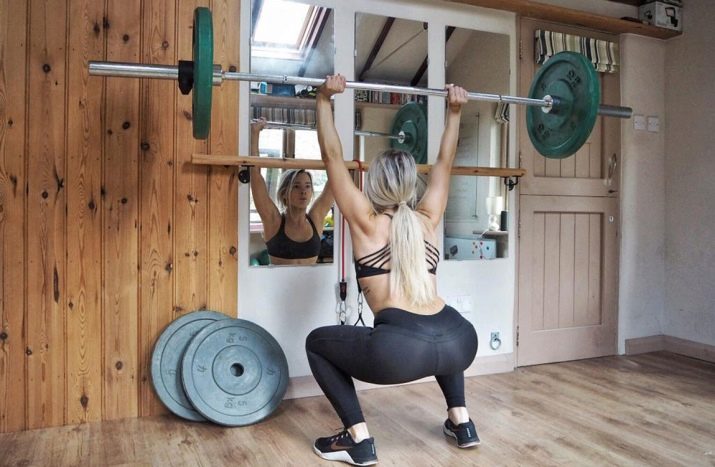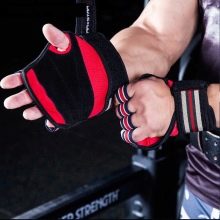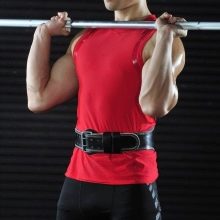Thanks to the promotion of a healthy lifestyle, more and more people show interest in sports and acquire the appropriate equipment. As a projectile for home workouts, people often choose a barbell that can effectively replace expensive exercise equipment and keep muscles in shape.
What it is?
Rod represents sports equipment designed for the development of different muscle groups of the human body. Its versatility is due to the large number of exercises that can be done with its help, ease of use and wide consumer accessibility.
If we talk about the history of the origin of the rod, then humanity began to use it for a very long time, and the first mention of the prototype of the modern projectile is found in ancient Egyptian and ancient Greek chronicles. The first “bar” looked somewhat unusual for a modern person and was a 3-meter wooden deck with holes for hands. The diameter of the log sometimes reached 50 cm, which required unprecedented strength and endurance from athletes.
The closest to the modern bar copies appeared in the XIV century in England and consisted of metal pins with cargoes fixed on the ends. Metallic cast cores with holes or shot bags that were put on the ends of the rod were used as cargo.
And only 5 centuries later, in 1896, the inventive Germans invented a collapsible structure in which it was possible to remove or add loads, and tried it at the Olympic Games held in the same year. A year later, Vladislav Frantsevich Kraevsky, who is rightly called the father of Russian athletics, was invented by a neck with three cutoffs.
The two extreme ones were designed to hold the bar with both hands, and the one in the middle - for exercises performed with one hand.
In addition, Kraevsky's bar had removable disks weighing from 2 to 10 feet and from 1897 began to be actively used in Russian competitions. A little later, the design was improved by domestic specialists S. D. Dmitriev, J. Sparre, and N. I. Koshelev. After 3 decades, in 1929, the German engineer Berg invented a bar on which the pancakes had the opportunity to move freely along with their attachment points, and which was successfully tested by weight-lifters at the European Championship in 1929.
The modern bar is a steel neck, at the ends of which there are movable sleeves designed for putting pancakes on. From the outside, pancakes are fixed with a special locking mechanism, which prevents them from falling off the rod and additionally weights the projectile.
As for the dimensions of the bar, they are entirely dependent on its purpose, type of exercise and fitness of the athlete. For example, for fitness, they use small convenient models designed for repeated repetition of the same movements, while for Olympic platforms there are very powerful professional samples.
Like any other weightlifting projectile, the bar has both strengths and weaknesses.
- So, unlike the simulators, "sharpened" under one or two exercises, barbell allows you to work with all muscle groups without exception. Moreover, it takes up much less space and costs much less.
- The next advantage of the projectile is the simplicity of the design, which has no complicated knots and consists of a neck and disks fixed on it.Compared with power trainers, the bar can last forever, as there is simply nothing to break in it, and its high strength allows the use of large weights.
- It should also be noted the possibility of increasing the weight load, which favorably distinguishes the barbell from dumbbells, most of the models of which have a static structure and do not allow changing the weight.
- Due to the fact that barbell exercises occur in the lateral plane and performed symmetrically, arms and legs make the same movements. This technique allows you to tighten weak points and does not allow distortions in the development of the muscular system. Moreover, thanks to multi-joint exercises, the release of growth hormone and testosterone increases dramatically, which contributes to the rapid growth of muscle mass.
The disadvantages of the projectile include a high risk of injury and the ability to work only in one plane, performing up / down movements. This rather negatively affects the shape of the muscles of the athlete. For example, with constant bench press, the chest gradually becomes flat, and if you do not begin to develop other muscle groups, the deformation of the chest becomes well visible.
In addition, with asymmetrical performance of the exercise, when one hand moves with a noticeable advance of the second, the muscles of the arms and shoulders develop unevenly, which also becomes visible to the naked eye.
Kinds
The classification of the rods occurs on several grounds, such as purpose of the projectile, its size and weight, as well as the design of the neck. According to the first criterion, such types of bars as the Olympic men's, standard, training, Olympic women's, as well as weights for squats and powerlifting are distinguished.
Olympic model
This projectile is the most revered and common among athletes, and if it is present in the gym, then everyone wants to work with him. However, the owners of fitness clubs because of the high cost of such equipment prefer to purchase products of a lower class and lower cost. As an example, we can note the bars of the famous brand Eleiko, the price of which starts from a few thousand dollars. However, the high cost of the Olympic models is fully justified: the shells are perfectly balanced, have a soft reeling and Kraevsky marking.
Moreover, the best, high-alloyed grades of steel are used for their production, which, together with the design features, guarantees excellent cushioning and high fracture toughness. The fitting sleeves of such models are attached to the fingerboard by means of bearings, which provides pancakes with independent rotation from each other and from the fingerboard.
Unlike training models, Olympic rods have a strict standardization of weight and size. This ensures that each pancake exactly corresponds to the declared value of the mass and does not exceed it per gram.
The projectile neck has a length of 2 m 20 cm and weighs 20 kg, its diameter being 2.8 cm and the width of the landing sleeves is 5 cm. Products are equipped with pancakes weighing 0.25, 0.5, 1.25, 2.5, 5, 10, 15, 20 and 25 kg, the weight of the lock is 2.5 kg. Here it should be noted that the diameter of pancakes weighing 10 or more kilograms is 45 cm. There are two types of discs for Olympic bars: rubber coated and uncoated the latter are intended solely for powerlifting.
For the convenience of visual determination of the mass, the disks of each weight have their own color.
Powerlifting bars
This sport is heavy weights, and therefore needs a reinforced design that can withstand high loads and not break in half. Such models superficially resemble the Olympic ones, however, in contrast to them, they possess greater rigidity and increased breaking strength. Therefore, if the neck of the Olympic models springs, helping the athlete to take the desired weight, then for powerlifting shells, the neck always remains static, otherwise it will simply break in two and injure the athlete.
In addition, the Olympic bar bars have a small reel, and for powerlifting models it is coarse-grained. The weight of the neck in such models is 20 kg, its length reaches 220 cm, and its diameter is 29 mm. The seating sleeves are designed for 50 mm, and the weight of the locks is 2.5 kg. The bar is equipped with pancakes 1.25, 2.5, 5, 10, 15, 20, 25 and 50 kg.
Standard model
Such rods belong to the category of the most massive and are available in various sizes and weights. Thus, the length of the neck of standard specimens varies from 150 to 220 cm, its diameter is 20-25 mm, and its mass ranges from 10 to 20 kg. Such a variety of sizes allows the athlete to choose the projectile, the most suitable for his physical abilities, and use it for daily training.
Often, standard models are not equipped with landing sleeves, and if they are present, they are not standardized and in most cases have a monolithic design with a fingerboard. This design significantly reduces the cost of the final cost and allows the standard rod to claim to be the most popular and affordable projectile. The barbell allows the athlete to work with pancakes of 2.5, 5, 10, 15, 20, 25 and 50 kg, the weight of the lock can vary from 1 to 2.5 kg, and the diameter of the fitting sleeves can vary from 20 to 50 mm.
Squat Models
Wells are distinguished by the fact that they do not have clear generally accepted standards, and each professional organization adheres exclusively to its internal requirements.. For example, WPC and WPA federations allow for the use of projectiles with a neck diameter not exceeding 32 mm, length of landing sleeves no more than 50.8 cm and a length of the entire neck no more than 240 cm. the total weight of the neck with locks should not exceed 30 kg.
However, such necks are prohibited in the IPF Federation, which has its own standards for this type of rod.
Motors for deadlifts
Such shells have elastic springy neck, which allows him to bend well and reduce the amplitude of the rise. This, in turn, allows you to work with large weights. Shells also differ larger notch, providing a reliable grip.
Olympic Women's Rods
These models are somewhat different from men and have a length of 205 cm. The weight of the neck is only 15 kg, diameter - 25 mm. Another difference from men's shells is the lack of a middle notch, since women do not perform exercises with a projectile with one hand. The bushing sleeves have a standard diameter of 50 mm, the weight of the lock is 2.5 kg. The model is equipped with pancakes weighing 0.25, 0.5, 1.25, 2.5, 5, 10, 15, 20 and 25 kg.
Training models
These bars are somewhat similar to the standard ones, they are available in two versions - European and American. Both species are almost identical with each other: the length of the neck varies from 120 to 180 cm, and its weight is 5-10 kg. The weight of the lock for this and that of another type is 2.5 kg, the weight of pancakes is 2.5, 5, 10, 15, 20 and 25 kg. The only difference between European and American shells is the diameter of the neck, which is 30 mm in the first case and 25 mm in the second.
Types of neck
The next sign of the classification of sports bars is the type of neck. According to this criterion, there are several varieties.
- EZ-neck. It is a curved rod that allows you to change the angle of the grip and thereby facilitate the implementation of the exercise. This model is very popular among athletes and significantly makes it easier to lift the biceps, the French bench press, triceps pumping from behind the head and the narrow bench press. For example, when working with vultures of a straight form, the athlete’s hands always go for a kink, and with the EZ-model, doing exercises becomes comfortable and safe.
- T-neck It is also a very common option and is present in all gyms. Bars with such a neck are very convenient for pumping back muscles.The core is made in the form of the letter T, the base of which is fixed on the frame, and the pancakes are located on the upper part.
- Trap Vultures they are quite functional inventions and are designed according to the principle of hexagons with fitting bushes for pancakes welded to the sides.
With this neck, it is convenient to pump inaccessible areas of biceps and triceps, which is not always possible to achieve with a conventional barbell.
- W-shaped model is one of the modifications of the EZ-neck. Differs from it more bent curve, changing the angle of the grip and even more relieving the load from the brushes.
Selection rules
When choosing a sports equipment must pay attention on a number of important points, such as the shape of the neck, the device locking mechanisms, the width of the landing sleeves and the weight of pancakes.
- You need to be especially careful when buying a team bar, when pancakes are bought separately from the neck. In such cases, it should be remembered that the diameter of the landing sleeves and necks is different. In the presence of an old bar, it is recommended to purchase a new one with the same size of the mounting diameter. This will allow the use of old pancakes with a new neck and will significantly save money.
- As for the locks, then the pancakes are locked on the fingerboard in three ways: with the help of a smooth sleeve, a spring or a nut. Sleeves and nuts allow you to securely fix the discs, but they require constant tightening / loosening. Spring torsion locks do not require: to fix the pancake, just lightly press on the spring and put the device on the neck. However, if during the exercise the bar will stand up vertically, the lock under the weight of the pancake opens and flies down with it. This moment is very important and when choosing a locking device must be taken into account.
- As for the drives, then in this case everything is purely individual, and each athlete chooses weight for himself. We can only advise one thing: rubberized pancakes keep the flooring in the weightlifting hall longer and do not make much noise when they fall.
- Regarding the length of the neck we can say the following: if the flat area allows, then it is better to purchase a model with a length of at least 1.9 m, a meter-long mini-bar is enough for a small room.
The cost of sports equipment depends on the manufacturer and purpose of the model. So, a small fitness bar from Titan, Atlantic or Body Sculpture with a length of 1.25 m and a weight of 12.5 kg will cost 80-160 dollars, while a collapsible model with a W-shaped neck of the same size will cost 150 dollars.
Storage and operation
When working with a barbell, it should be remembered that, unlike simulators, this projectile is quite traumatic. Therefore, the technique of safe use and storage of the projectile should be given increased attention. In the gyms and fitness clubs there are all the necessary conditions for doing barbell, but if classes are held at home, then they will have to take care of themselves.
First of all, you need to allocate a place for training. It should be a dry, well ventilated area with non-slip floor and good lighting.
When performing any exercise, it is very important that there are no young children or pets in the room. This is due to the risk of a sudden fall of the bar and a high probability of injury to others. therefore in order to avoid injuries, it is necessary to restrict access to the premises of persons not related to the training process.
The execution of the bench press is permissible only in the presence of sliding racks - safety stops, on which the projectile is placed after the end of the exercise. When working with a rod, it is necessary to use safety devices that protect the most vulnerable parts of the human body from injury. So, the application calipers and bandages protects joints from sprains, ligaments from sprains, and muscles from cramps.
Weight Lifting Gloves provide reliable protection of the palms against contact with metal and do not allow the projectile to slip out of the hands. BUT special belts reduce the load on the spine and prevent stretching of the back muscles.
You also need to be very careful when replacing pancakes and in no case unscrew them alone if the bar is placed on a high stand. Otherwise, one edge of the projectile will outweigh, the bar will fall to the floor and may cause serious injury.
Store the bar should be in a dry ventilated area, otherwise the projectile may rust. When placing the model for long-term storage, it is recommended to remove the pancakes, wipe the projectile with a dry cloth and put into a special case.
An overview of the bar vultures, see the following video.
